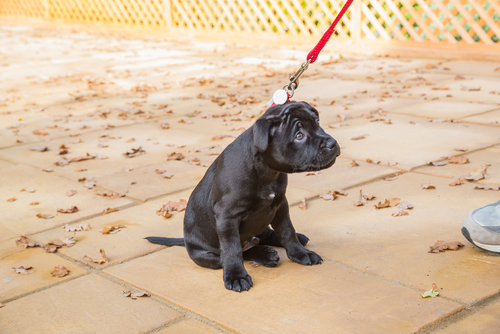July 2, 2025
Dog Socialization Challenges to Look Out For
Dog socialization challenges can transform daily walks into stressful ordeals and turn simple interactions into complex behavioral issues. From fear-based aggression to overwhelming anxiety, these problems affect countless dog owners who struggle to help their pets feel comfortable in social situations.
Proper socialization forms the foundation of a well-adjusted, confident dog. Yet many pet owners face significant obstacles when trying to help their dogs navigate the world around them. This comprehensive guide explores the most common dog socialization challenges and provides proven solutions to help your canine companion thrive.
Common Dog Socialization Challenges
1. Aggression Issues
Fear-Based Aggression
Fear-based aggression often manifests when dogs perceive threats in unfamiliar situations. Dogs may growl, snap, or lunge when they feel cornered or overwhelmed. This behavior typically stems from inadequate exposure to various stimuli during puppyhood or traumatic experiences.
Dog-on-Dog Aggression
Insufficient exposure to other dogs during formative months frequently leads to inappropriate canine interactions. Dogs may display territorial behavior, resource competition, or simply lack the social skills necessary for peaceful coexistence with other pets.
This challenge becomes particularly problematic in multi-dog households or during encounters with unfamiliar dogs in public spaces. The aggression may escalate if not addressed promptly and appropriately.
Resource Guarding
Resource guarding involves aggressive behavior when dogs perceive threats to their valuable possessions, like food, toys, sleeping areas, or even human attention. This learned behavior often develops from competitive environments or past experiences of scarcity.
2. Fear and Anxiety Disorders
General Fear and Anxiety
Poorly socialized dogs often develop overwhelming fear responses to everyday situations. Strangers, loud noises, unfamiliar environments, and routine activities like car rides can trigger intense anxiety reactions.
These dogs may shake, pant excessively, attempt to hide, or exhibit destructive behaviors when stressed. The fear can become so severe that it significantly impacts their quality of life and limits their ability to participate in normal activities.
Separation Anxiety
Over-reliance on owners for security creates separation anxiety when dogs must cope independently. This condition manifests through destructive behavior, excessive vocalization, and attempts to escape when left alone.
Separation anxiety often develops in dogs who haven’t learned to feel secure in various environments or with different people. The resulting behaviors can damage property and create neighborhood disturbances.
3. Overexcitement and Hyperactivity
Dogs struggling with excitement regulation may jump on visitors, bark excessively, or display frantic energy during social interactions. This overexcitement often stems from insufficient exposure to social situations and a lack of impulse control training.
While enthusiasm can seem positive, uncontrolled excitement creates problematic situations. Dogs may accidentally injure small children, damage property, or overwhelm other animals with their intense energy.
4. Environmental Adaptation Difficulties
Handling Problems
Dogs uncomfortable with human touch may resist veterinary examinations, grooming procedures, or routine care activities. This challenge creates stress for both dogs and their handlers, potentially compromising health and hygiene.
Professional service providers often struggle to work with dogs who haven’t been conditioned to accept handling. The resulting stress can make necessary procedures traumatic experiences.
5. New Environment Struggles
Some dogs exhibit extreme difficulty adapting to unfamiliar locations. They may refuse to walk in new areas, display anxiety symptoms, or engage in avoidance behaviors that limit their experiences and exercise opportunities.
This limitation affects the dog’s mental stimulation and can create logistical challenges for owners who need to travel or relocate with their pets.
How the Gladiator K-Nine Collar™ Supports Socialization
The Gladiator K-Nine Collar™ harnesses patented SemiCera® technology to address stress-induced behaviors that complicate socialization efforts. This innovative approach targets the physiological aspects of anxiety and stress that traditional training methods alone cannot address.
The collar’s technology works continuously to minimize stress-related behaviors, including destructive actions, excessive barking, aggression, withdrawal, restlessness, pacing, and trembling. These improvements create better conditions for successful socialization training.
Transform Your Dog’s Social Confidence
Addressing dog socialization challenges requires patience, consistency, and the right tools. The combination of proven training techniques with innovative stress-reduction technology creates powerful opportunities for behavioral transformation.
When dogs feel calmer and more secure, they’re better able to connect, learn, and grow through socialization. By enhancing emotional regulation, the Gladiator K-Nine Collar™ helps unlock the full potential of your training efforts. Ready to support your dog’s progress with a science-backed solution? Contact us today to learn more about our patented ceramic technology.



